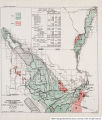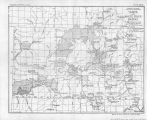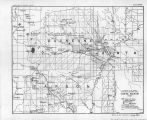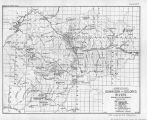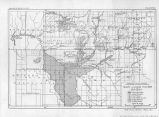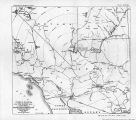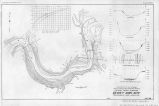| OCR Text |
Show PROBLEMS OF IMPERIAL VALLEY AND VICINITY. 23 7. Both sites have been pronounced geologically feasible for the construction of a high dam by Geologist JF. L. Ransome, of the United States Geological Survey. The A site has the appearance.of being the better dam site, as it is located in the more confined part 01 the canyon, where the abutments are very massive. The C site/however, has many practicable advantages which offset any advantages whicli the A site may have. It offers a better solution for river diversion during construction. It is more accessible, which will simplify construction and result in a smaller unit cost of concrete. It is less confined and offers greater possibilities for construction plant. It offers a better location for the power house, outlet works, and spillway. The abutments are naturally adapted to ^the type of dam recommended and are so shaped as to offer the greatest possible resistance to failure. The volume of concrete in the dam is less for the type recommended than at the A site, which taken into consideration with accessibility should result in a considerably less expensive structure. TYPES OF DAMS. 8. Two general types of concrete masonry dams have been investigated-the gravity type and the arched type. On account of the shape of) the canyon at the most favorable dam site comparative estimates show practically identical costs for the gravity and arch dams, with a considerably greater cost for the power development if the arch dam is used. It is considered that, the gravity type is simpler and more conservative in design and better suited to.a dam of such an unprecedented height. It is< recommended that to eivtr additional security the gravity type dam should be aiched in plan; using the shortest radius that will fit the topography. With a 26,500,000 acre-foot reservoir the dam will have a maximum height of 700 feet, of which 570 feet will be above the original low-water surface. Its length at the base will be about 200 feet and at the top 1,130 feet. With a 31,400,000 acre-foot reservoir the dam will have a maximum height of 735 feet, of which 605ieet will be above,the original low water surface. The length on top in this case will be, about 1,250 feet. DIVERSION DURING CONSTRUCTION. 9. The base of the dam in the deepest part of the river channel will be from 130 to 140 feet below low-water level. It is proposed to proyide a by-pass for the river during construction with a capacity of 50,000 second-feet. This by-pass will be through tunnels around the south end of the dam connecting with the permanent spillway outlet tunnels. Cofferdams will be built above and below the dam site capable of diverting through the by-pass floods up to 50,000 second-feet and of being overtopped without serious damage by greater floods. One type of cofferdam considered is a concrete arch with its base on bearock and its top at proper height to by-pass a 50,000 second-foot flood. It would De built in vertical sections sunk by compressed air methods. Another method would consist of the same concrete arch except that its base would be sunk as far as practicable into the gravel and boulder formation lying beneath the 70-foot thick blanket of sand in the river bed. This method would |
| Source |
Original book: [State of Arizona, complainant v. State of California, Palo Verde Irrigation District, Coachella Valley County Water District, Metropolitan Water District of Southern California, City of Los Angeles, California, City of San Diego, California, and County of San Diego, California, defendants, United States of America, State of Nevada, State of New Mexico, State of Utah, interveners] : |





































